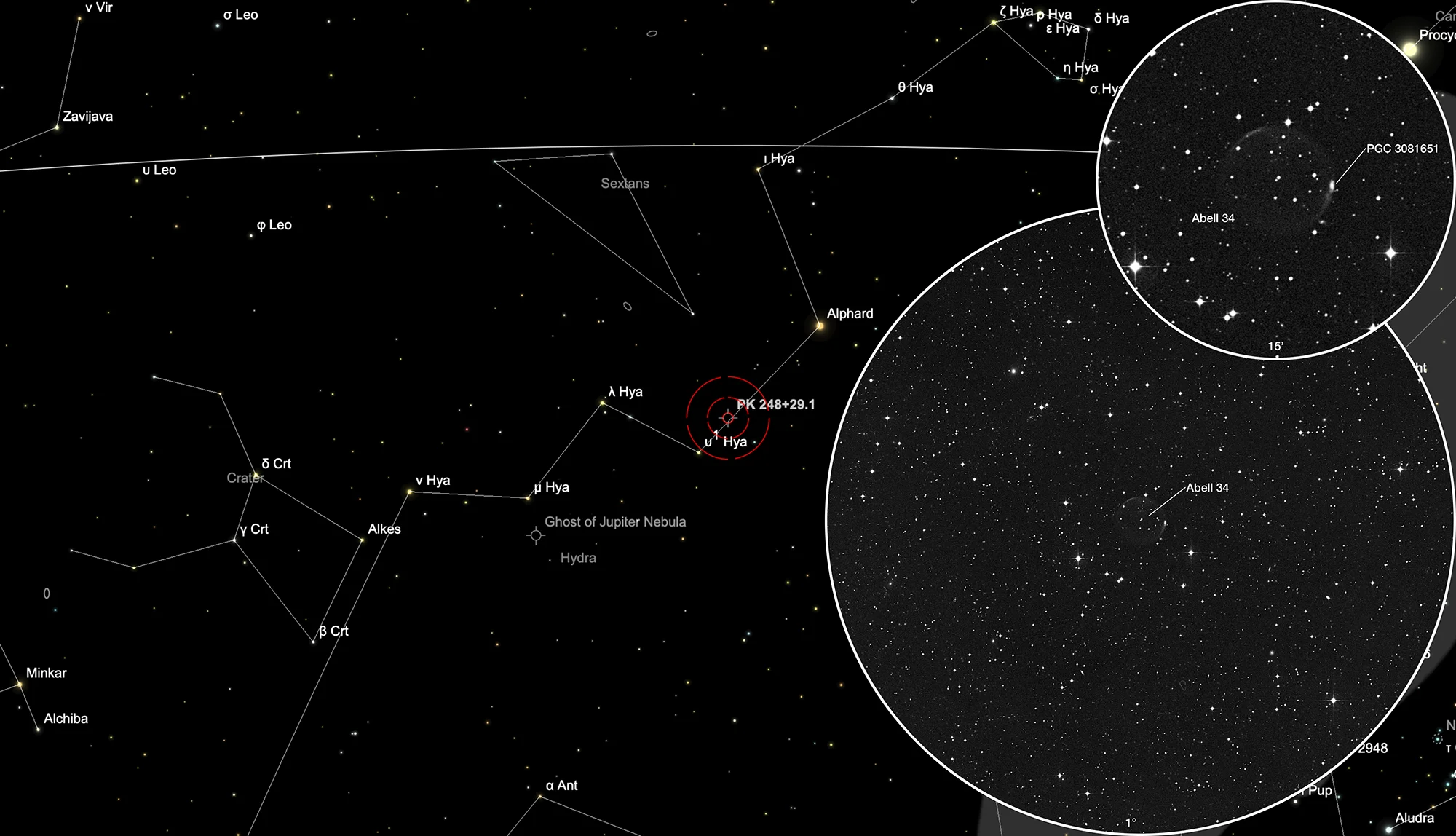Planetary Nebula Abell 34

History
The planetary nebula Abell 34 was discovered in 1955 by the American astronomer George Ogden Abell on the photo plates of the Palomar Observatory Sky Survey (POSS). In 1955 he published a first list of 13 globular clusters and the positions of 73 planetary nebulae. The PN was then listed as number 23 (A55 23). In 1966 Abell published a completed list including the size and description of the 86 planetary nebulae discovered on the POSS photo plates. The PN was then listed as nebula 34 (A66 34). He described it as «a ring with gaps (incomplete ring)» [331, 332]
The designation PK 248+29.1 originates from the two Czechoslovak astronomers Luboš Perek and Luboš Kohoutek, who in 1967 compiled a catalog of all the planetary nebulae of the Milky Way known at the time. [146]
Physical Properties
Given distances for the planetary nebula Abell 34 range from 0.7 to 1.1 kpc. Magnitudes through different filters: B 16.06; V 16.32; J 16.812. The planetary nebula is superimposed on the distant galaxy PGC 3081651 (LEDA 3081651) which can be seen on the western edge of the nebula's shell. [145]
| Designations | PN G248.7+29.5: A 34, PK 248+29.1, A55 23, VV' 93 |
| Right Ascension (J2000.0) | 09h 45m 35s |
| Declination (J2000.0) | -13° 10' 14" |
| Dimensions | 290." (optical) |
| Expansion Velocity | 32. (O-III) km/s |
| C-Star Designations | AG82 121, CSI -12 -09432, UBV 9230 |
| C-Star Magnitude | U: 15.04, B: 16.06, V: 16.32 |
| C-Star Spectral Type | Hg O(H) |
| Discoverer | ABELL 1955 |
Finder Chart
The planetary nebula Abell 34 is located in the constellation Hydra. On 13 February it is in opposition to the Sun and crosses the meridian at local midnight. It is best observed from October to July.
